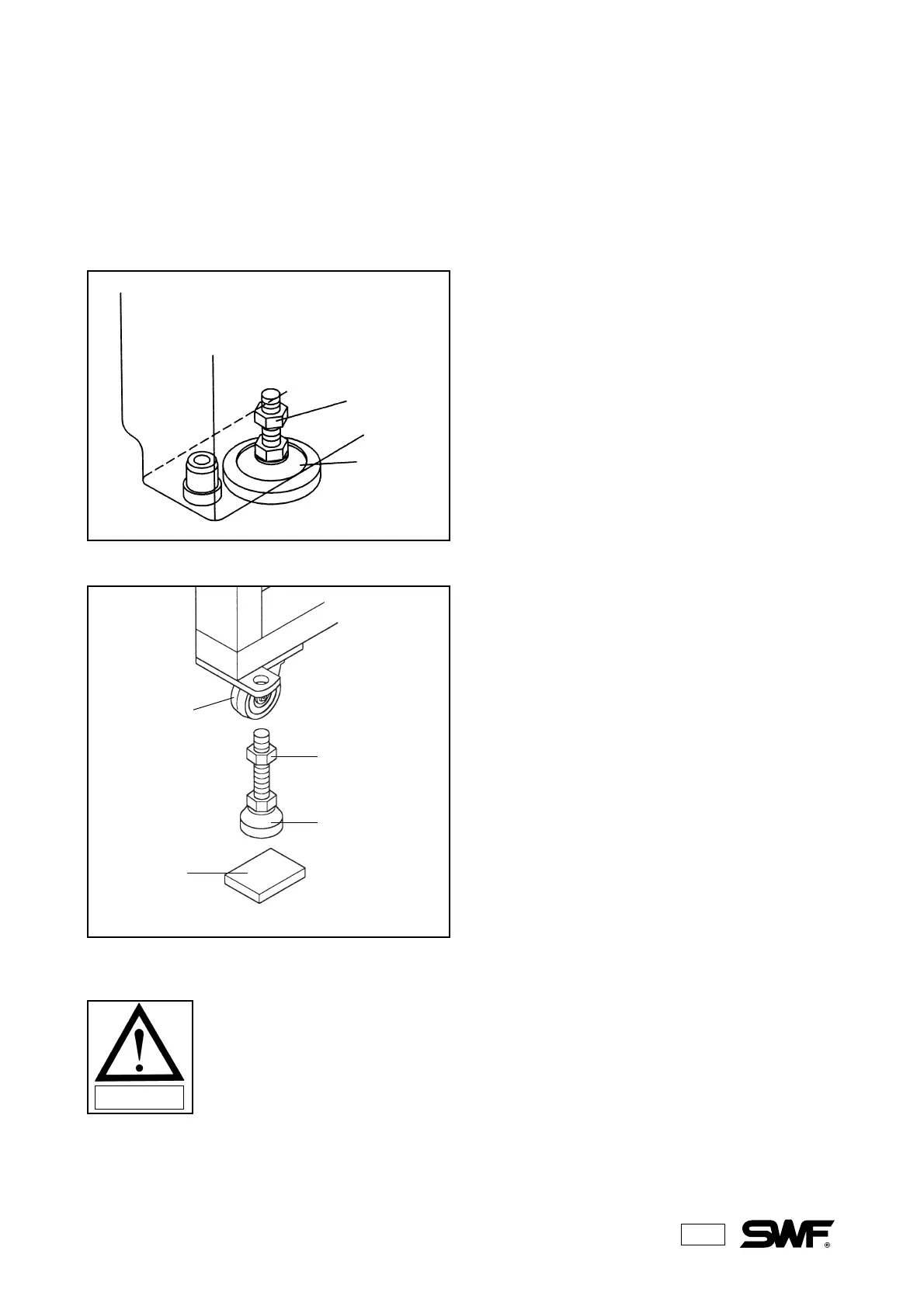9
LEVELING THE MACHINE
The machine must be leveled when it is installed. Balancing the machine horizontally protects the
needle from moving out of position.
Nut
Adjusting
bolt
Nut
Adjusting bolt
Rubber
Caster
1) When there is no stand attached. adjust the front,
rear, left and right of the machine using the level
adjusting bolt. When the machine is level,
tighten the fixing nut.
2) When there is a stand attached, insert the four
horizontally adjusting bolts into the holes on the
stand. Then place the four rubber mats (for
vibration prevention) under each of the bolts.
Adjust the bolts until the caster is raised above
the level of the floor. Use a level to adjust the
machine using the horizontally adjusting bolts so
that the machine is level on all four sides. When
the machine is level, tighten down the fixing
nuts.
CAUTION
1) The machine must be balanced horizontally in all four directions : front, back, left and
right.
2) If the height of the four adjusting bolts varies over 10mm, use spacers beneath the
lower bolts to make the heights even.
